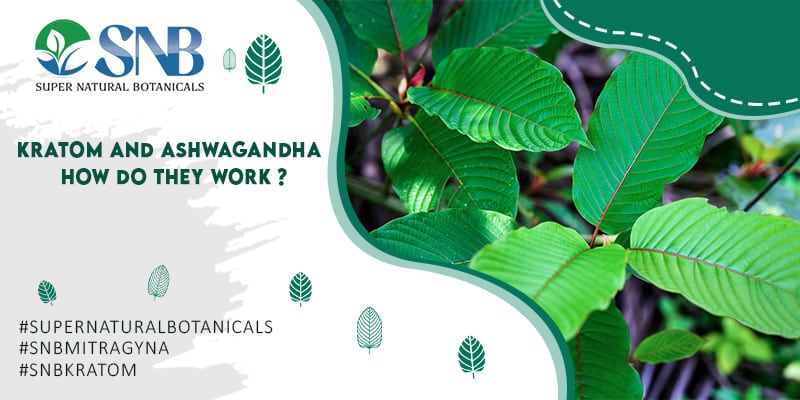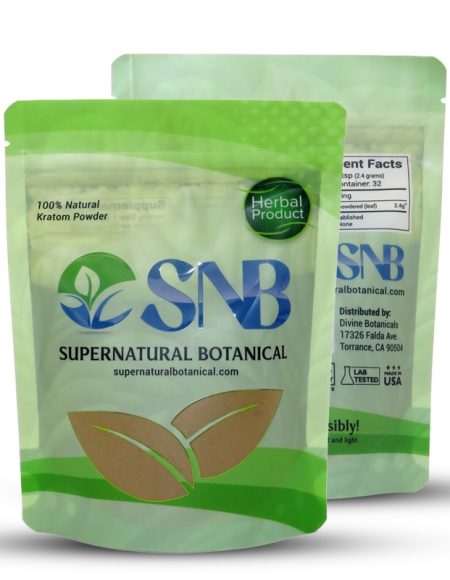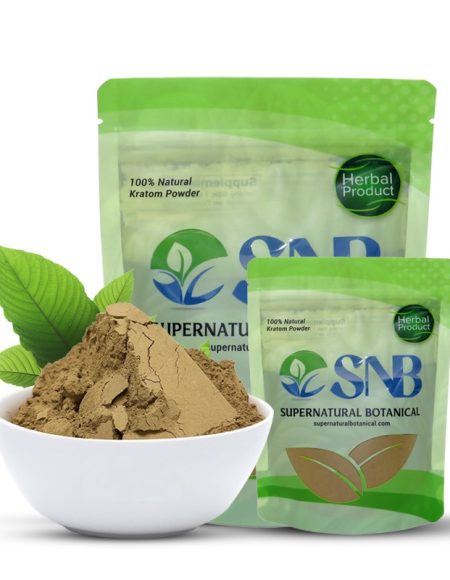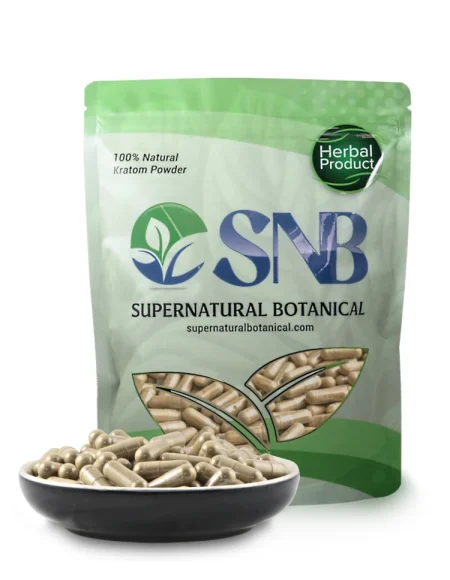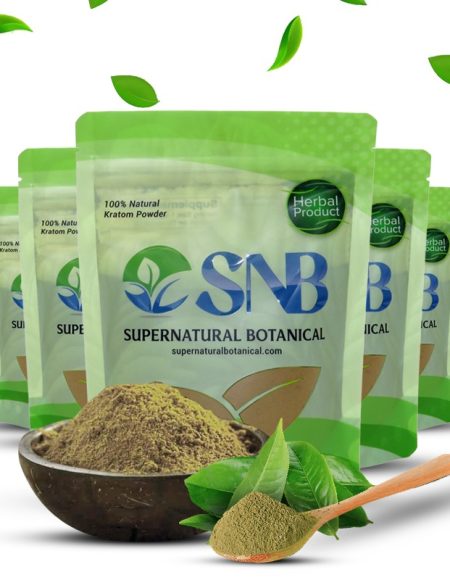Are you tired of using Kratom alone? Do you want greater euphoria with more medicinal benefits? Then you need to try a new ethnobotanical in the market called Ashwagandha root or Withania Somnifer.
If you are a kratom enthusiast looking for that special ingredient to boost the potency of your kratom extracts, then read on to find out everything about Ashwagandha and its added benefits when used with Kratom.
What Are Kratom And Ashwagandha?
Gaining its origins from Southeast Asia, Kratom is a part of the coffee or Rubiaceae family. The medicinal herb initially gained popularity in Indonesia, Malaysia, Thailand, and Myanmar but quickly spread its roots worldwide because of its dual use as a relaxant and stimulant. The herb is obtained from the leaves of the Mitraygna Speciosa trees, which have multiple veins of different colors to indicate the difference in effects and potency.
On the other hand, Ashwagandha, also called Withania somnifera, originated from India, Africa, and some areas in the Middle East. It belongs to the Solanaceae or nightshade family. Also known by the names of “Indian winter cherry” and “Indian Ginseng,” this herb has been a long-standing constituent of herbal and Ayurvedic medicine because of its benefits in general health and well-being.
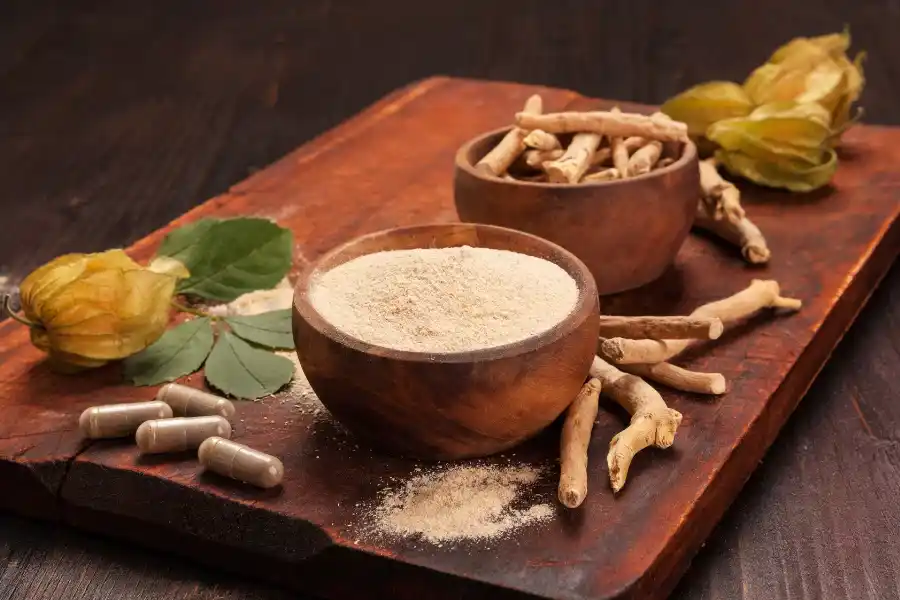

How Do Kratom and Ashwagandha work?
Kratom is made up of a wide variety of chemical agents. Mitragynine, and 7-Hydroxymitragynine, however, are the most important ones. This is because 7-Hydroxymitragynine has the greatest potency, whereas Mitragynine is present in the highest quantity. As a result, they rapidly reach the brain through the bloodstream and activate different substance receptors, producing Kratom’s relaxant and stimulant effects.
Ashwagandha’s chemical constituents belong to three main classes; alkaloids, steroidal lactones, and saponins. According to research, the alkaloids include Anaferine, Anahygrine, Isopelletierine, and Cuseohygrine, whereas Withanolides and Withaferins belong to the class of steroidal lactones. All of these chemical agents work together to create Ashwagandha’s broad spectrum of health-promoting effects.
Do They Have Similar Effects On Body And Mind?
Kratom and Ashwagandha share similarities in some of their effects on the body and mind. A study conducted in the National Center for Complementary and Integrative Health revealed Kratom’s relaxing effects after consuming higher herb doses. These included discomfort relief, a calm mental state, drowsiness, and euphoria. Consumers experienced stimulant effects such as increased focus and motivation, higher energy levels, and a longer attention span at lower doses.
According to a study published in the Journal of Psychoactive Drugs, Kratom plays an essential role in increasing the capacity to work and helps in withstanding intense heat and sunlight. In addition, Kratom’s benefits in physical performance and satisfaction have been documented in a study conducted by the Journal of Herbal Medicine in February 2020.
Similarly, a study published in January 2001 in Phytomedicine: International Journal of Phytotherapy and Phytopharmacology explored the benefits of Ashwagandha in mental health illnesses and in stabilizing mood and feelings of helplessness in people with behavior problems by inducing a calm and relaxed state.
Ashwagandha has gained popularity in the past few years for its anti-cancer properties and possible role in preventing and treating various cancers. A study published in a journal called Molecular Nutrition And Food Research further discussed these claims.
Through its effects on the brain, Ashwagandha plays a role in preventing the breakdown of brain cells and destroying harmful chemicals. This is the basis for its use in improving memory and preventing the progression of various diseases, as stated in a study published in 2012 in Alzheimer’s Research And Therapy Journal.
Kratom’s effects on the body and brain are more rapid and last for a shorter period. On the other hand, Ashwagandha takes time to show its effects which are comparatively more subtle. However, both are incredibly potent herbs and can be used on their own and with each other.
Can Kratom And Ashwagandha Be Mixed Together?
The answer is yes! Many Kratom users reported positive results after consuming it, along with Ashwagandha. This combination is considered safe and effective, mainly keeping Ashwagandha’s herbal roots are in mind. However, it is vital to start with a minimal dose and then build upon it with time. First-time users should start with one drug initially and then later incorporate the other into their routine.
Can Ashwagandha Increase Kratom’s Potential By Mixing?
For the longest time, consumers have been trying to find different potentiators for Kratom and one such agent is thought to be Ashwagandha. As discussed above, both have a multitude of benefits on their own. But when used together, Ashwagandha can strengthen Kratom’s effects with regular doses and increase its duration of action by preventing its elimination from the body.
Ashwagandha can reduce the risk of Kratom overdose since only a small amount of Kratom will have to be taken for the same effects. It also works to balance out Kratom tolerance and counteract toxicity associated with the psychoactive herb’s long-term use with its own purely sedative effects. However, Ashwagandha’s role as a potentiator is dose-dependent, so it is essential to learn about the proper dosages before you start using the two herbs together.
What Is The Ideal Dosage Of Both?
Getting the correct dose is the most critical factor. It is recommended to start from a lower dose of 300 to 500 milligrams per day and then build up to 1500 milligrams when consuming Ashwagandha alone. Kratom, on the other hand, can be consumed between two to twelve grams. Less than two grams will usually not produce the desired effects, whereas a dosage between two and six grams is considered low. Six to eight grams of Kratom produce more significant effects and are usually used as medication. Eight grams is the boundary for a heavy dose, and consumers should not go above it.
However, if you are planning on mixing the two; some changes will have to be made. Ashwagandha’s effects usually appear with continued use, so it is better to consume it three to four times before mixing it with Kratom. For less frequent consumers, around 1-2.5 grams of Kratom can be used with a smaller dose of 0.5-1.5 grams of Ashwagandha. More seasoned consumers can play around with the dosages and figure out what works best for them. But remember to be cautious and not overdo it.
What Are The Available Forms Of Kratom and Ashwagandha?
Nowadays, Kratom is available in the form of capsules, extracts, liquid, and tinctures. In addition, consumers can also crush the leaves of the Mitragyna Speciosa tree to obtain the powder form of Kratom. This raw powder is the most commonly available variant and was brewed in various teas, chewed, and smoked in older times. In addition, the powder can be used with alcohol or other food and drinks to make it easier on the palate.
Like Kratom, Ashwagandha is also found in powdered form, obtained from the extracts of its root or leaves. The root of the herb can itself be used in the fresh or dried state. The root and leaves are often used to make different teas, and the flavor is improved by adding some honey. In addition, the potent ethnobotanical is also available as gummies, liquid drops, and capsules. All of these forms are widely available on the internet and can be purchased easily.
Conclusion
In conclusion, people looking to potentiate Kratom with Ashwagandha can try these two herbs together to determine whether they live up to the hype. However, always start with the minimal doses and then build up to the higher ones. It would be best to consult a health care professional before consuming high amounts of any of the herbs since sufficient scientific research still needs to be conducted.


Heather lives with her husband and two children in beautiful British Columbia. Her passion has always been to enhance the lives of others by helping them reach their own personal goals and accomplishments. Content management is her specialty, and writing is what she does best. Her love for helping others lead her to the cannabis and kratom scene, where she saw an immense gap between patients and medicine that can help them.


